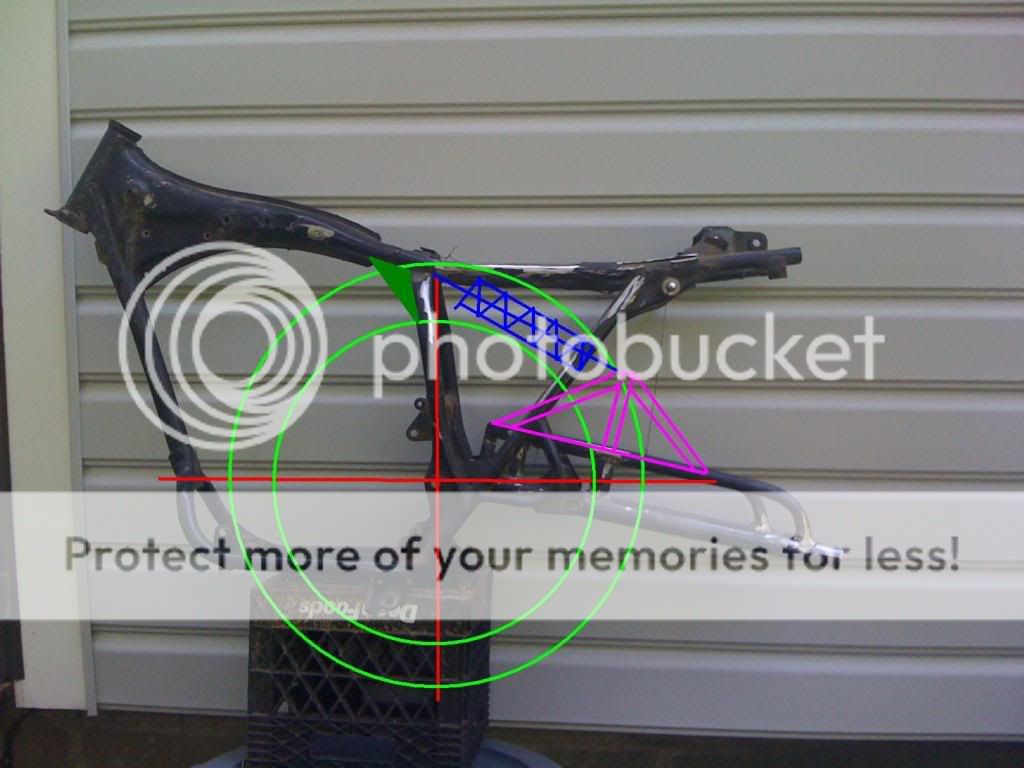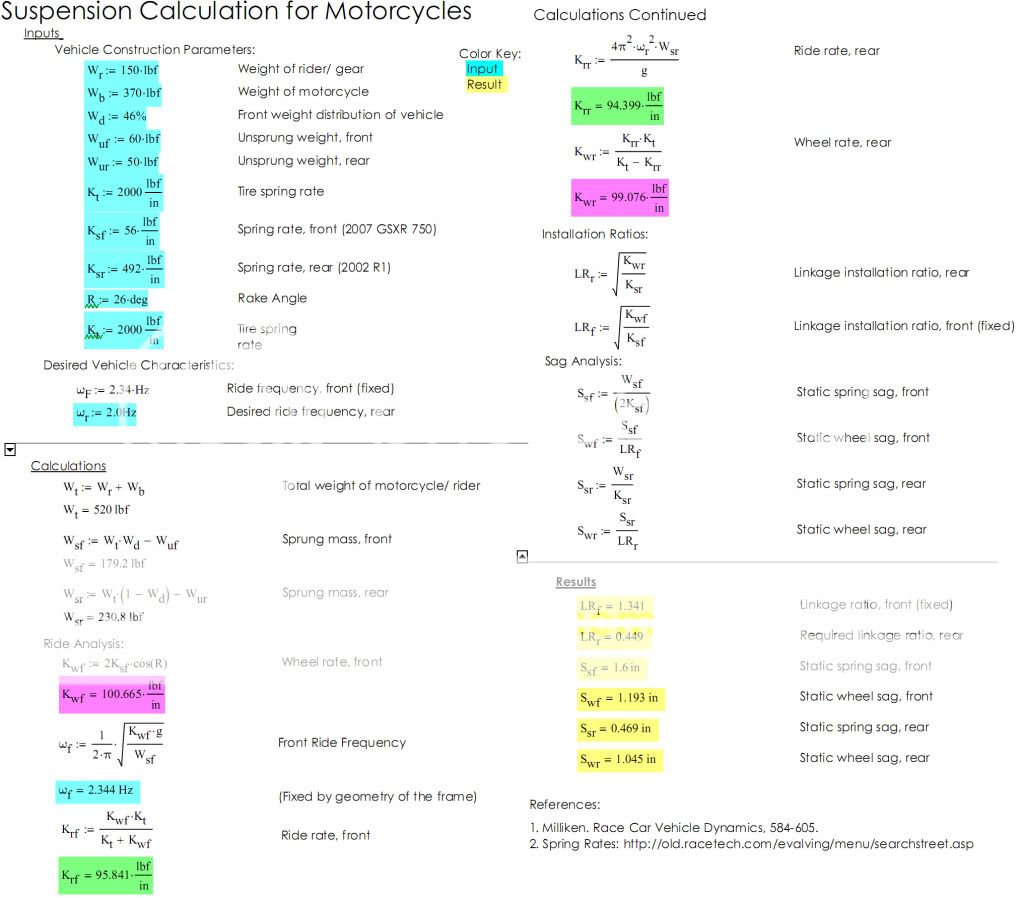So, here I am, a good 4 or so years later, and I've gotten back at my bike. In the interim I got married, took over the family business, and bought/fixed/sold a sweet ass Volvo P1800. I needed something to tinker with again, and the bike was a perfect fit. I'm doing my best to make time for fun stuff instead of working way too much and then crashing on the couch to watch netflix, so hopefully I get this thing done soon...
I decided to direct mount the shock with a top hoop setup...way easier. The Yamaha R1 shock is probably a little too soft, but it's still stiffer than the front forks by far. I'm also a 6'5" beast, so a new spring might be in order. 200 lbs or so higher might do it, but I'll ride it first to see how it works. There's a company that makes springs up to 1200 lb/in in the right size.
I've also painted and buttoned up the motor with fresh gaskets and seals and checked out all the bearings/gears to make sure everything is in order. When I got the motor some previous owner had already gone 1st oversize, and the pistons were still really tight. I slapped new rings on and called it a day... hopefully it runs well. Broke a clutch screw reinstalling (I'll buy the allen head type with the collars), and I'm gonna get a PMA from Hugh's Handbuilt instead of the grimey old alternator that was on it.

I'd been worried about the distance of the front and rear wheels from the visual "weight" of the motor for a long time, so I installed the motor to see how it was all working out. Slapped the stock tank on as well just to give it more of a "motorcycle" look instead of bare tubes and springs. I think the wheel positions have come out spot-on, and I won't have to rake out the front to move the front wheel farther forward. The front end will also come down around an inch, since I plan on using a flat billet upper triple clamp.

As far as a tank and seat go, I don't think I'd be happy with anything off the shelf, and since I'll be building something why not make it carbon fibre... I made a seat plug before, but I wasn't really happy with it so I scrapped it. Thought about using the Honda tank, but want something sexier... I think I'll be making a carbon "continental style" tank, and a seat to match. People sell the continental style tank in fiberglass, but they want 500$ for it...way, way too much when I can build something myself and have the skills/materials laying around. I don't particularly like the look of full on carbon tanks and seat pans, but I like the idea of a little bit of carbon poking out from under paint, just to give things some street cred.
Hopefully I'll check in with more updates soon...
P.S. if anyone has a spare, or knows the size of the right side spacer (spool type) for the XS650 drum wheel I need one. Pretty sure I have all the other parts, just the wrong spacer from the mag to spoke swap.












